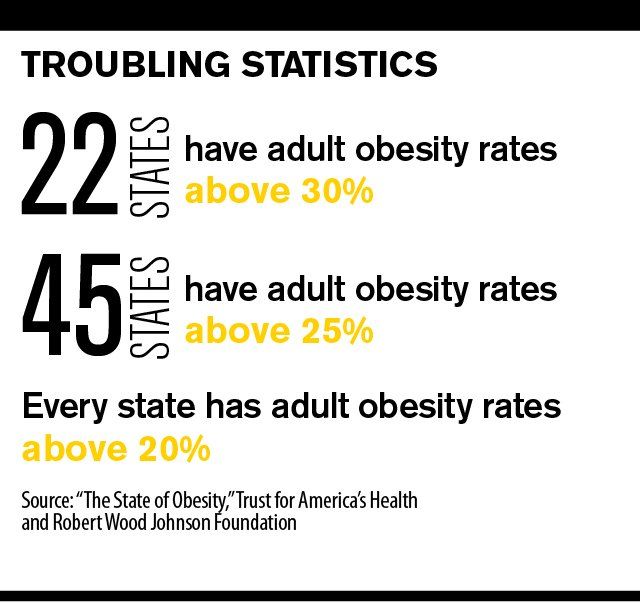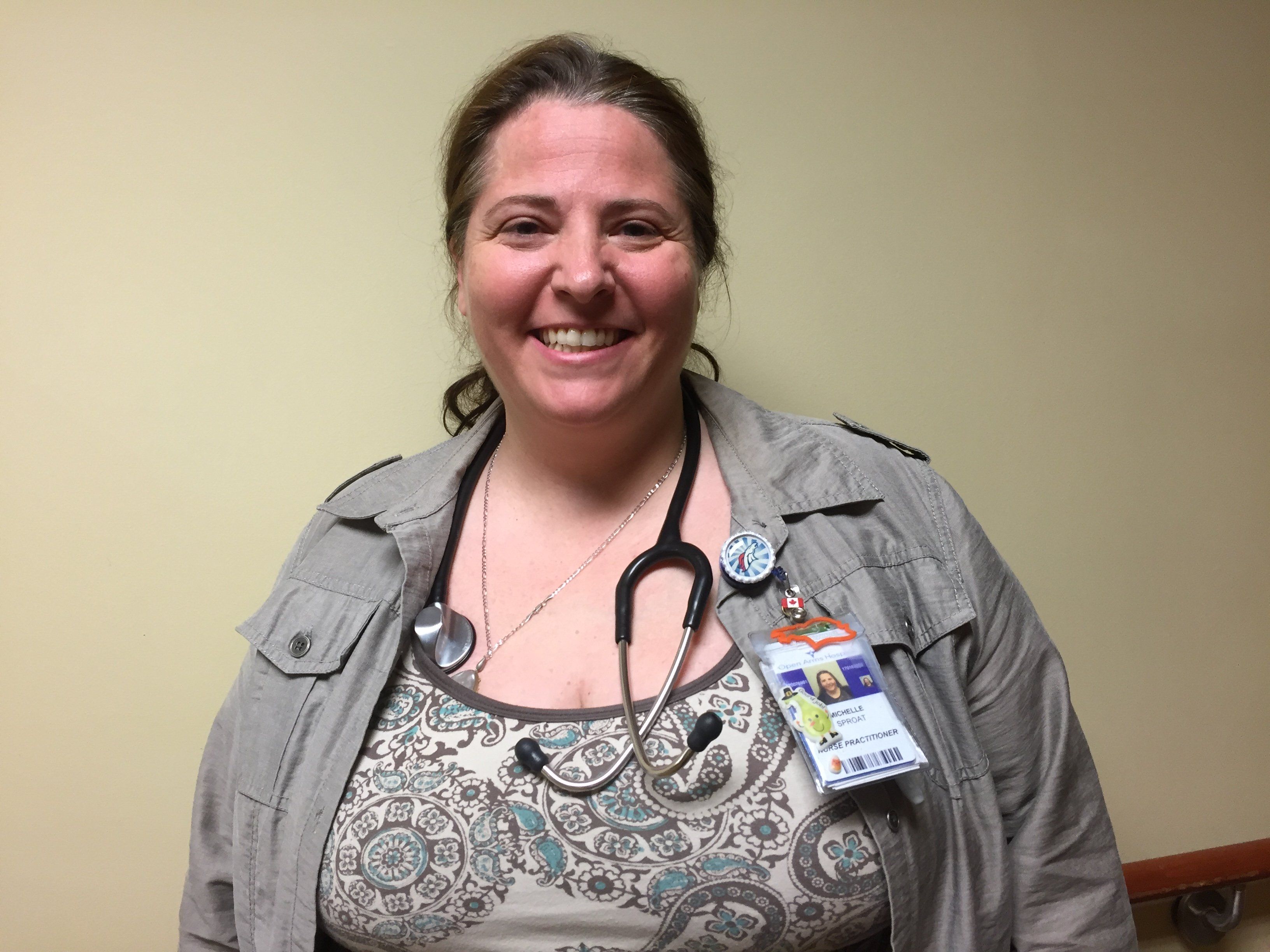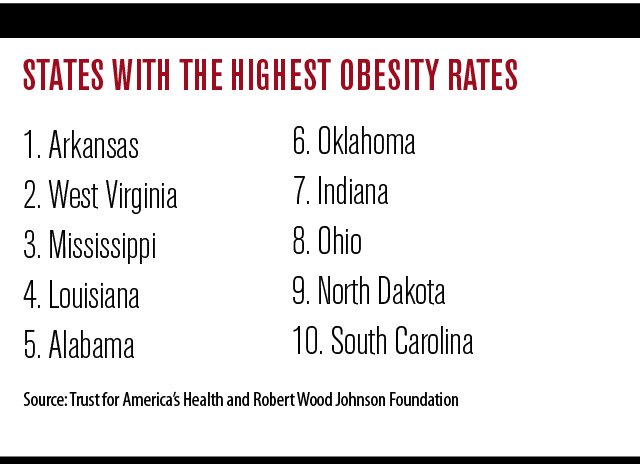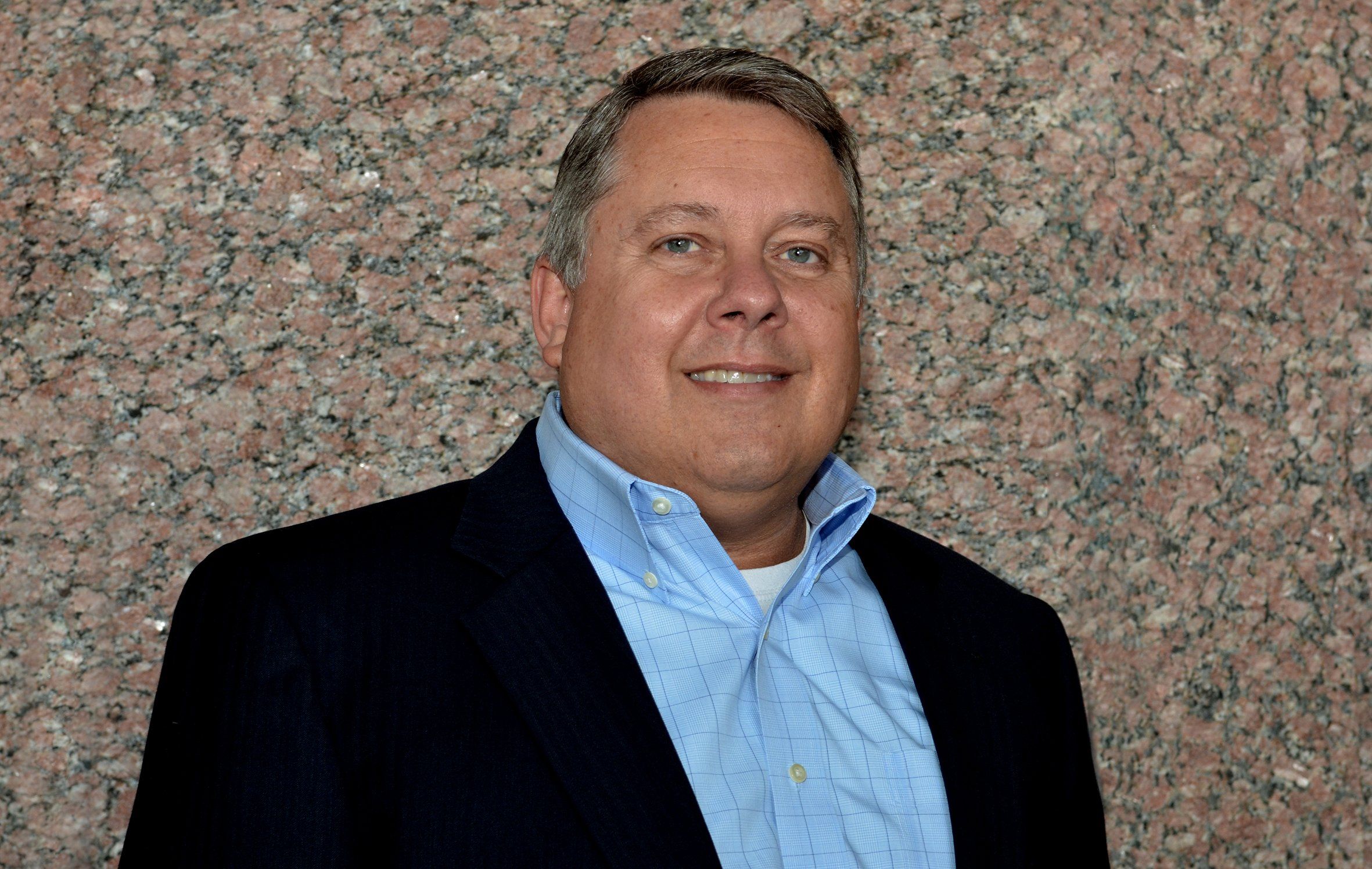Successful provider, plan led weight loss programs
How one health system and one health plan are fighting the obesity epidemic
With 35% or more of their residents living with obesity, Arkansas, Mississippi, and West Virginia are three of the states hardest hit by the adult obesity epidemic in the U.S., according to Trust for America’s Health.

Next up in the tier of states hardest hit is South Carolina, which has the country’s 10th-highest rate of obesity, according to 2014 numbers. About 32% of its adult population is obese, and two out of three children are obese. The state spends a little more than $8.5 million dollars on obesity-related illnesses-mostly on Medicare and Medicaid patients. Obesity leads to all types of difficult-to-treat chronic illnesses, such as type 2 diabetes, high blood pressure, obstructive sleep apnea, and gallbladder disease.
One health system hit hard by these health issues is Bon Secours St. Francis Health System in Greenville, South Carolina, and its leadership team is working hard to address and prevent these issues from escalating. The team started by taking a hard look at their own employees, and invested in them as a way to promote health and wellness among patients and the larger community.
Upfront investments included installing walking paths in and around buildings and adding group fitness classes-all based on employee feedback. The health system also started hosting an on-site farmers market so that staff and patients alike could have easy access to fresh produce.
“Employees said it was ‘too time consuming’ to buy fruits and vegetables, so we brought these healthy foods to our staff and patients to make it easier for them to purchase,” says Patricia Barnes, director of HealThy Self, a program devoted to fitness and weight loss at the health system.
Tapping into motivation

BarnesFinding out what’s going to motivate people to lose weight is a challenge, says Barnes. “We did everything for people, including buying them exercise shoes, so they didn’t have that expense. But people were looking for that ‘magic pill’ that would take care of their weight. They just weren’t motivated.”
Still, she says, the healthcare system found some effective ways to motivate staff and patients, such as by organizing walking contests within the hospital or with other hospitals. The health system also encouraged staff members to make meal preparation and planning a family activity-and to generally engage in more physical activities with their children, such as riding bikes. That’s because one in three of these children are overweight, and they’re learning these habits at home, says Barnes.
One of the struggles-in particular with hospital workers, similar to those who work in the manufacturing industry-are the long shifts, says Barnes. Hospital staff work 12-hour shifts, and not many people are going to want to be active after that, she says. And, night shifts are the worst, because people tend to eat unhealthy foods, often at erratic times. Worse still is when people are working swing shift, which means they’re working day shifts one week then night shifts the next week. That’s terribly hard on the body, and those people have the hardest time losing weight and controlling their food intake, she says.
Next: Starting with staff
Starting with staff
Bon Secours St. Francis Health System’s Physician-Guided Weight Loss Program was launched for staff in June 2011 and extended to patients and community members in November 2011. The 12-week program involves having participants meet with the medical director to ensure that they’re a good fit for the program-meaning that they have no physical contraindications to exercise, such as cardiac or blood pressure issues-and to review baseline lab results and biometric data. Participants also meet with a registered dietician to develop a meal plan and with an exercise physiologist to develop an activity program.
Every two weeks, participants have follow-up meetings with a registered dietitian and an exercise physiologist; biometric data are taken from patients in the same cadence and labs are repeated at the end of the program.

SproatMichelle Sproat, a nurse practitioner at Bon Secours St. Francis Health System is one of the program participants. A full-time nurse practitioner, Sproat says she was enticed to look into the health system’s weight loss program because she received $300 in return for having a health assessment done. After receiving her physical assessment-which included being weighed and having her labs taken-Sproat started dietary counseling sessions, where she learned about new ways to cook food and that she needed to set a rule for herself of not eating past 9 p.m. Describing her financial investment in the program organized by the health system as “very reasonable” and spread out over three or four pay periods, where it was automatically taken out of her paycheck, she said her only other cost included an activity tracker-which she used to enter her food intake, physical activity, and sleep-for about $150.

All program participants are self-pay, says Barnes, who notes that none of the payers the health system contracts with reimburse for this type of program. While Barnes was unable to share the cost of the program, she says that participants are not required to purchase an activity tracker.
One of the key things Sproat learned was that she was prone to mistaking hunger for thirst, so she started drinking more water. “I have to force myself to eat a good breakfast, even though I don’t like eating breakfast. But it’s the most important meal of the day,” she says. She now focuses on eating small snacks and meals throughout the day-and drinking lots of water.
Physical activity has been pivotal to her success, too. When she was in the 12-week program, if she hadn’t been to the hospital’s on-site gym in three days, she received a call from someone at the gym to determine if she was working out. And even though she hasn’t been actively involved with the program for a few months, she still gets e-mails from the fitness staff to find out how she’s doing.
As a result of her involvement in the program, Sproat lost 23 pounds and quite a few inches off her waist, she says. “This wasn’t done overnight. I didn’t want to take diet pills or do surgery. All of my tests-my blood sugar, my cholesterol numbers-have all improved dramatically. I know I dropped a pant size, and I have a lot more energy and I sleep better,” she says.
Next: Netting results
Netting results
The average participant who completes the program experiences a 5% to 6% weight loss, a reduction in body mass index (BMI), a 10% to 12% reduction in systolic blood pressure, a 12% decrease in fasting blood glucose, and an 11% decrease in total cholesterol-without changes in medications, says Matthew Johnson, health promotion supervisor at Bon Secours St. Francis Health System. For employees alone, the hospital estimates that it will save more than $135,000 over the course of three years. (Typically, cost savings aren’t measured until at least three to four years into a program, and short-term return on investment hasn’t been proven in research. Long-term analysis for the program used 2012 as the baseline year and then compared only employees who took the screening every year up to 2015.)
The health system has worked closely with community organizations to increase the reach of its wellness program, but really looks to employees as its strongest ambassadors for the program, says Barnes. Tapping into people’s motivation to stay with this type of program is sometimes a very slow process, she says. “This might be their third or fourth shot at the program, and then something kicks in and they start to get serious about it and realize this is about lifestyle change.”
It’s also important to realize that people live stressful lives, and that this type of change is difficult, says Barnes, who notes that Bon Secours St. Francis Health System is self-insured and uses incentive programs to encourage involvement among its employees. She encourages payers to be more willing to help invest in these types of programs for patients.
Having the difficult conversations

PrewittOne of the greatest challenges in attempting to treat obesity is that many doctors don’t code for it and they don’t talk to their patients about being overweight, says Todd Prewitt, director of clinical best practices at Humana. This is important, because if doctors don’t note within the patient encounter in the EHR that a patient is obese, that information is simply unavailable.
“While obesity is an accepted fundamental risk factor for chronic conditions, particularly for our senior population, in the midst of managing more acute conditions, it can be assigned a lower priority due to the time and complexity required and in light of the limits of evidence-based solutions,” says Prewitt, who notes that this is often the reason that physicians don’t code for obesity.
Humana, as a Medicare Advantage provider, covers behavioral counseling sessions to help members with a BMI of 30 or more lose weight.
There’s a reason doctors are hesitant to bring up the topic with patients. Obesity is hard to manage, and patients are typically already aware that they are obese, he says. Prewitt recommends that doctors focus instead on some of the health conditions that are associated with the chronic disease, such as diabetes, obstructive sleep apnea, or the risk of heart attack or stroke.
“You don’t go in first with obesity. You actually go in with the complications, which are the underlying driver of obesity,” he says.
Humana has been working with digital health provider San Francisco-based Omada Health, which uses the 16-week online Prevent program to coordinate care and engage with patients who have diabetes. The Prevent program leverages a full-time health coach, smart technology, online support groups, an interactive curriculum, and gamification to change patients’ behaviors, according to the company.

AhmadThe communication about the program actually comes from patients’ doctors-rather than the insurer, says Sarah Ahmad, vice president of consumer health solutions at Humana. Ahmad points out that the message received by patients has to be right-whether they’re learning about the Prevent program from a personal conversation or a letter from their doctor. And the way the doctor delivers this message to patients is just as important as the news itself-which is all the more reason focusing on the conditions associated with obesity is important, she adds.
The initial results of a partnership with the Prevent program has led to a cohort of 491 of Humana’s Medicare Advantage members achieving clinically meaningful engagement and weight loss outcomes. The average age of participants in the program is nearly 70, and six months after being engaged in the program more than 85% remain active. Participants in the program lost an average of 8.7% of their body weight, according to a Humana spokesperson, who notes that data from the Diabetes Prevention Program clinical trial indicates that this level of weight loss in at-risk individuals over aged 60 years is associated with a 71% reduction in type 2 diabetes risk at three years.
The insurer has also improved awareness of the risk of undiagnosed and untreated obstructive sleep apnea, provided broader access to testing through awareness of home sleep testing, and worked to improve compliance with positive airway pressure treatments, according to a company spokesperson. The result has been a greater than 85% increase in adherence to positive airway pressure therapies for obstructive sleep apnea, and an average of 10% reduction in per-month healthcare costs for members who have engaged with the program.
Humana has been able to achieve lower costs by focusing on quality and health-and as a result, achieved 18% lower costs in total in 2014 for members treated by a value-based reimbursement model versus fee-for-service Medicare, says a spokesperson.
Further, because of better chronic condition management for diabetes and osteoporosis compliance, screenings for members in value-based reimbursement models were 9% higher for diabetes care/eye exam, 12% higher for diabetes care/blood sugar control, and 13% for osteoporosis, according to Humana.
Aine Cryts is a writer based in Boston.
Doing More and Saving More with Primary in Home Care
September 1st 2021In this week’s episode of Tuning In to the C-Suite podcast, MHE Associate Editor Briana Contreras interviewed VillageMD’s Senior Medical Director of Village Medical at Home, Dr. Tom Cornwell. Dr. Cornwell discussed the main benefits of primary care at home, which includes the benefit of cost savings for patients, maintaining control of hospital readmissions and others. Dr. Cornwell also noted what has changed in the industry of at-home care and if there has been interest from payers like insurance companies and medicare in the service.
Listen
This week on Tuning Into The C-Suite Briana Contreras spoke with Dr. Scott Hayworth, president and CEO of New York-based CareMount Medical. In this interview, the two discussed the importance of patients staying in contact with their doctors for the sake of reducing public health risks and to discuss ongoing care options with them.
Listen